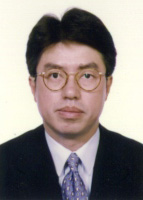
National Publications
The following publications used ISAAC data from SAR China:
- Wong GWK, Hui DSC, Tam CM, Chan HH, Fok TF, Chan-Yeung M, Lai CKW. Asthma, atopy and tuberculin responses in Chinese schoolchildren in Hong Kong. Thorax 2001; 56(10): 770–773
SAR China, Asia-Pacific
| Centres: | Phase: | PI: | Age Groups |
|---|---|---|---|
| Hong Kong 13-14 | 1 | Dr Christopher Lai | 13-14 |
| Hong Kong 6-7 | 1 | Professor Yu Lung Lau | 6-7 |
| Hong Kong | 2 | Dr Christopher Lai | 10-11 |
| Hong Kong 13-14 | 3 | Professor Gary Wong | 13-14 |
| Hong Kong 6-7 | 3 | Professor Yu Lung Lau | 6-7 |
National Coordinator:
Roles:
- ISAAC Steering Committee
- Regional Coordinator for Asia-Pacific
- National Coordinator for SAR China
- Phase One Principal Investigator for Hong Kong 13-14
- Phase Two Principal Investigator for Hong Kong
Dr Christopher Lai

Department of Medicine and Therapeutics
The Chinese University of Hong Kong
Room 1403, Takshing House
20 Des Voeux Road Central
SAR China
I got involved in the ISAAC project when I was invited to the steering committee as the regional coordinator of Asia Pacific in the early 90’s. At that time, Hong Kong already had some prevalence data on asthma, rhinitis and eczema, although these data were based on studies using different methodologies and included a wide range of subjects - children, adults and hospital patients. This makes comparison between studies from different time points and with other populations from different geographic locations difficult. The ISAAC study has allowed us to make valid comparisons with our counterparts in mainland China. The phase 1 data revealed a striking difference in the prevalence of asthma symptoms – up to a 4-fold difference – between schoolchildren in Hong Kong and those in mainland China. This, together with the demonstration that we have a relatively high asthma prevalence amongst our children, we were able to secure funding from the research grant funding bodies to further our research on asthma epidemiology.
The grants enabled us to conduct the phase 2 study not only in Hong Kong, but also in 2 mainland centres, Beijing and Guangzhou. This study identified certain environmental factors that could account for the difference in asthma prevalence between Hong Kong and its mainland counterparts. The data provided some insights to further research into the aetiology of asthma not only in China, but also in other parts of the world.
Our experience in the previous 2 phases of the study certainly helped us to conduct the phase 3 much more smoothly. We are pleasantly surprised to see the prevalence of asthma symptoms has declined though still not certain what was causing this change.
During the time of our participation in the project, we have validated the video questionnaire on asthma symptoms1 and the Chinese translated version of the ISAAC core questions for atopic eczema2.
- Lai CKW, Chan JKW, Chan A, Wong G, Ho A, Choy D, Lau J, Leung R. Comparision of the ISAAC video questionnaire (AVQ3.0) with the ISAAC written questionnaire for estimating asthma associated with bronchial hyperreactivity. Clin Exp Allergy 1997, 27: 540-545
- Chan HH, Pei A, van Krevel C, Wong GWK, Lai CKW. Validation of the Chinese translated version of ISAAC core questions for atopic eczema. Clin Exp Allergy 2001, 31: 903-907.
